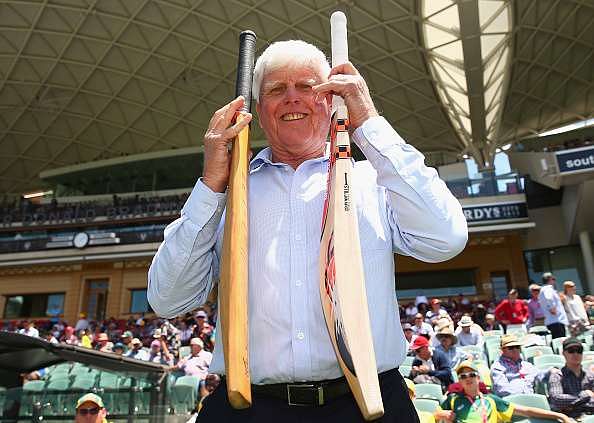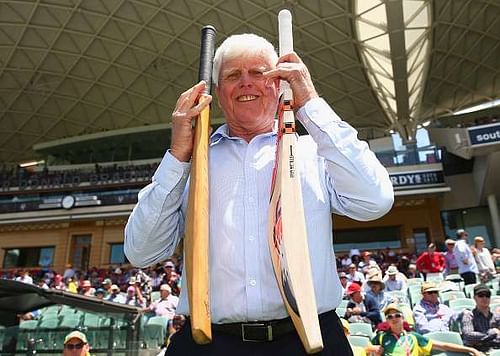
Larger bats have robbed cricket of balance
Cricket is so much like life. It is so much about balance, about maintaining the inherent charm and not fiddling around with the grandeur too much even when experimenting. Over the years however, this balance seems to be going for a toss and there is little hope remaining that the parity that makes cricket a joy to watch can be restored.
The bowlers have been reduced to mere playing figures in the field who take part because the rules say so. Batsmen have had everything going their way and bowlers keep running in and then wading back to run in again. If the many restrictions on the number of bouncers and the pulled in boundaries were not enough, the growing size of cricket bats is just shifting the balance further away from the bowlers.
Cricket bats have just grown bigger and bulkier over the years. It is hard to now see a bat with an edge; the edges have become part of the face, and the massive bulge behind the bat makes it look like a piece of log more than a bat.
What is even more startling is that although the size of the bats has increased, the weight has remined the same due to the improved standards in bat making and use of good quality willow, which means that the moisture content is low. This then means that these bats are not pressed and hence the ball just pings off the bat.
The sweet spot is no longer confined to a definite portion of the bat but the wood spread has made the sweet spot more or less the entire face of the bat. No longer are the batsmen concerned about mishits; they just swing through the line and the dense meat in the bat takes the ball well over the boundary ropes.
And then there are shorter boundaries. Balance, anyone?
This is probably the reason why current bats do not last more than 800 balls and sometimes they crack open in the middle. It has all to do with proper punching and oiling, concepts which have become alien to the modern bat makers.
For all the meat of modern bats, Barry Richards in the 1970s used a 2lb, 7oz bat while the chunk of wood that David Warner uses weighs only 2lb, 10oz.
“The only thing that seems to be in common is they've got wood and they've got a grip. There might be very serious injury sometime in the future beacuse of this,” Barry Richards had famously said when comparing bats from his era to a David Warner bat.
What should be regulated?
It is not as if the the authorities are blind to the growing concern. The MCC World Cricket Committee has recommended investigation into bat regulations, and perhaps the easiest way to regulate and tone down bat sizes would be to restrict the size of the edges.
Currently, while there are rules in place for the width of the face of the bat, there are no guidelines about the width of the edges. Factor this: bats in the 70s and 80s had edges of 10-13mm thickness as compared to the 45mm or more in the current day and age.
What is more glaring is the bulge behind the bat, and the ICC and MCC should take this into account. The bulge gives extra thrust to the batsmen and the ball scoots off the bat.
Injury concern for the bowlers
Apart from all the technical details, there is a genuine concern about the threat of injury to the bowlers. The fast bowlers are merely at a distance of 15 yards from the batsmen in the follow through and the chance of them being hit by the ball smashed towards them is no longer a far-fetched improbability.
Umpires have already started wearing helmets and the bowlers should also be looked after. They cannot just be cannon fodder.
Interest of the crowd
In the era of fast paced action, crowds throng the stadiums and want to see action. They want to to see balls flying and batsmen ruling the show. True cricket is a spectator sport, but what if it is played as it should be played, that is, with parity and an equal contest between bat and ball?
If the batsmen indeed play without fear and without any inhibition, imagine the nature of the contest if bowlers try to outwit them with their guile and skills. Imagine how gripping it would be if the batsmen were aware that a mishit would lead to their dismissal.
Cricket is far more than cold numbers and statistics, it is played as much in the mind as on the field. And the ever-increase size of bats is robbing the game of that intrinsic beauty.
